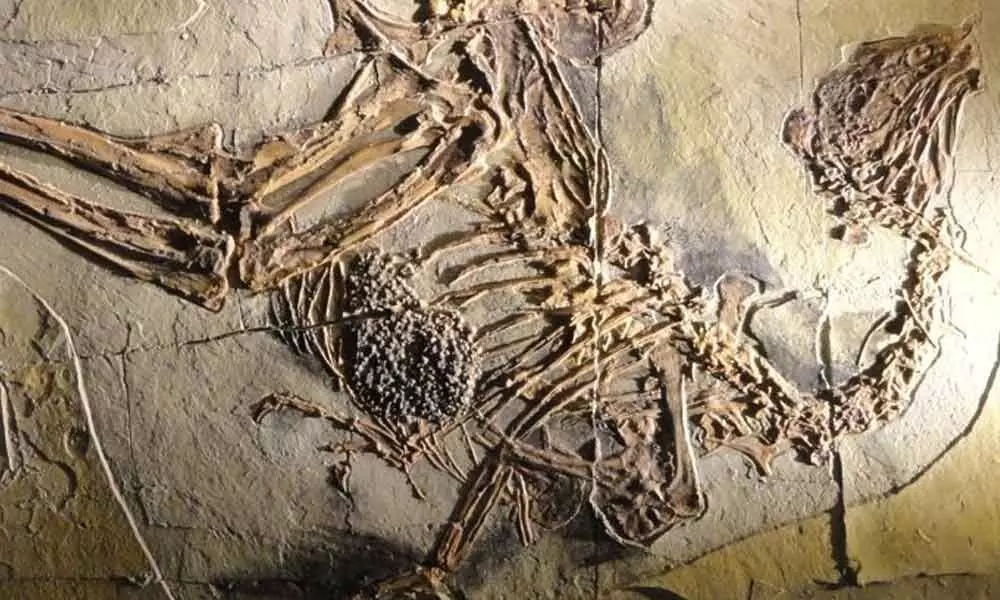Scientists Observed Dinosaur DNA May Still Be Found In 125 Million-Year-Old Bones

Dinosaur DNA may still be found in 125 million-year-old bones, according to scientists.
- Dinosaur DNA may still be found in 125 million-year-old bones, according to scientists.
- DNA may be found in 125 million-year-old dinosaur fossils discovered in China.
Dinosaur DNA may still be found in 125 million-year-old bones, according to scientists. DNA may be found in 125 million-year-old dinosaur fossils discovered in China. If the microscopic structures represent DNA, they will be the oldest known chromosome material preserved in a vertebrate fossil.
DNA is coiled inside chromosomes in the nucleus of a cell. Possible cell nucleus structures have been discovered in plant and algae fossils stretching back millions of years, according to researchers. Scientists have even speculated that a collection of 540 million-year-old microfossils may contain retained nuclei.
it's difficult to tell the difference between a fossilised nucleus and a random blob of mineralization generated during the fossilisation process, these assertions are frequently disputed.Researchers compared fossilised cartilage from the feathered, peacock-size dinosaur Caudipteryx with cells from modern chickens in a new study published Sept. 24 in the journal Communications Biology; they discovered structures in the fossils that looked similar to chromatin, or DNA and protein threads.
In an email to Live Science, Alida Bailleul, a paleobiologist at the Chinese Academy of Sciences who led the new research, stated, "If there is any DNA or DNA-like molecule in there, it will be – as a scientific guess – very, extremely chemically changed and altered."Modes:
However, Bailleul said, if paleontologists can identify chromosome material in fossils, they may someday be able to unravel snippets of a genetic sequence. This could reveal a little more about dinosaur physiology.
Any microscopic structures inside cells were considered collapsed cell contents, such as organelles and membranes, that had rotted before mineralization, Carlisle told Live Science.
However, if palaeontologists can identify chromosome material in fossils, they may be able to decipher bits of a genetic sequence in the future, according to Bailleul. This could provide some insight into dinosaur physiology.
But first, scientists must determine whether the DNA is present. Most palaeontologists believed that rot and decay destroyed the contents of cells before they could be fossilised until recently.
Carlisle told Live Science that any microscopic structures inside cells that had rotted before mineralization were considered collapsed cell contents, such as organelles and membranes.
However, palaeontologists have recently discovered real cell structures in a few fossils. For example, 190 million-year-old fern cells were buried in volcanic ash and fossilised so swiftly that some were frozen in the act of cell division, according to a study published in the journal Science in 2014. Unmistakable chromosomes are visible in some of these cells.Bailleul and her colleagues revealed in 2020 that DNA may have been preserved in the skull of a newborn Hypacrosaurus, a type of duck-billed dinosaur that lived 75 million years ago and was discovered in Montana.
The possible DNA was discovered in cartilage, which is the connective tissue that holds the joints together.
The researchers used a well-preserved Caudipteryx specimen from China's Shandong Tianyu Museum of Nature for the current study.
Bailleul and her team discovered that the cartilage cells contain structures that look like nuclei with a scramble of chromatin inside by examining the stained, fossilised cartilage with several microscopy methods.Carlisle told Live Science that any microscopic components inside cells that had deteriorated before mineralization were deemed collapsed cell contents, such as organelles and membranes.
However, palaeontologists have recently discovered real cell structures in a few fossils. For example, 190 million-year-old fern cells were buried in volcanic ash and fossilised so swiftly that some were frozen in the act of cell division, according to a study published in the journal Science in 2014.
In some of these cells, distinct chromosomes can be seen.Bailleul and her colleagues revealed in 2020 that DNA may have been preserved in the skull of a newborn Hypacrosaurus, a type of duck-billed dinosaur that lived 75 million years ago and was discovered in Montana.
The putative DNA was discovered in cartilage, which is the connective tissue that holds the joints together.encased in stone
The researchers used a well-preserved Caudipteryx specimen from China's Shandong Tianyu Museum of Nature for the current study.
The relic, which was unearthed in the northeastern region of Liaoning, had plenty of preserved cartilage, which the scientists stained with the same chemicals used to scan DNA in current tissue. These dyes bond to DNA and, depending on the dye, turn it a distinctive colour, allowing DNA to stand out against the rest of the nucleus.Above: A shot of the entire slab containing the Caudipteryx fossil, as well as a close-up of the right femur (b), where scientists discovered the mysterious cells.
According to Carlisle, the imaging clearly shows nuclei, but identifying petrified chromosomes is more difficult because no one knows what happens to chromosomes as they decay.It's possible that the nucleus' contents just collapse into formations that resemble chromosomes but are really just a tangle of meaningless calcified garbage, or that the fossilisation process preserves part of the original molecular structure.
According to a 2012 study, DNA in bone will degrade fully in around 7 million years, but the exact timing will be determined by environmental conditions.
Next Story

















